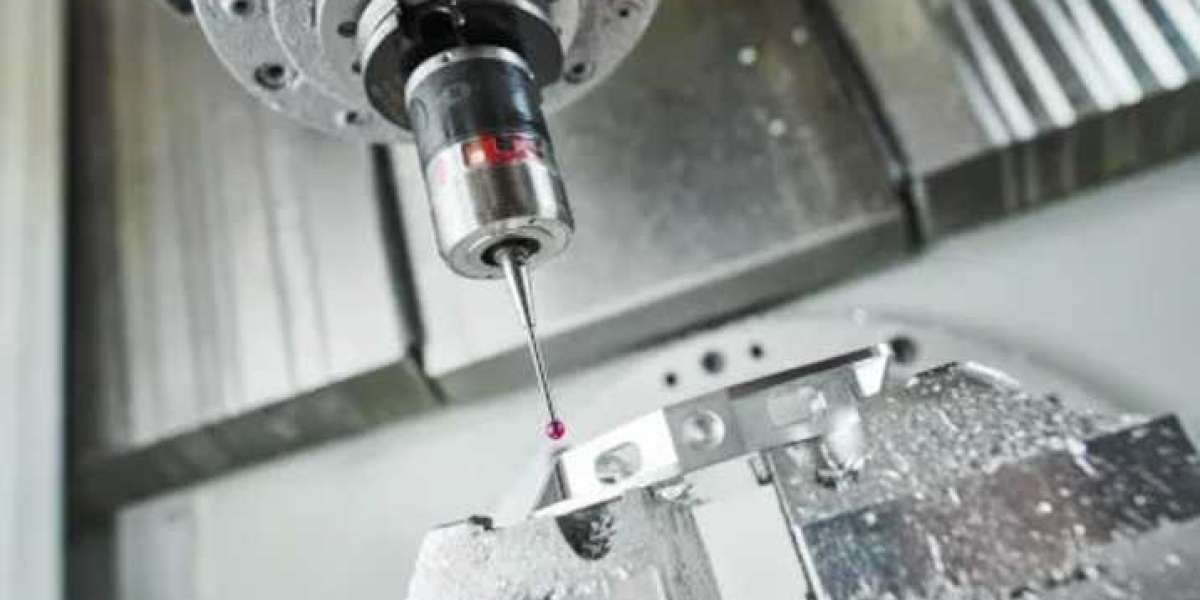In today’s fast-paced world of product development, creating prototypes is a critical step in transforming ideas into functional products. Prototypes help companies test, validate, and refine their designs before committing to full-scale production. Among the many materials available for prototyping, aluminum has emerged as one of the most popular due to its lightweight, durability, and ease of fabrication. Aluminum prototypes offer a perfect balance of performance and cost-effectiveness, making them invaluable for industries ranging from aerospace to medical devices. This article explores the importance of aluminum prototypes, their benefits, applications, and the process involved in creating them.
What Are Aluminum Prototypes?
An aluminum prototype is a preliminary version of a product made from aluminum, created to test and refine the design before full-scale manufacturing begins. Prototypes allow engineers and designers to assess the functionality, fit, and form of a design, helping to identify and fix potential issues early in the development process. Aluminum is often chosen for prototypes due to its excellent combination of lightness, strength, and machinability, which makes it ideal for testing the performance of different types of products and components.
The use of aluminum in prototypes is versatile, with applications ranging from the automotive and aerospace industries to consumer electronics and medical devices. Aluminum prototypes allow for rapid iteration, ensuring that the design process is both efficient and cost-effective.
Why Choose Aluminum for Prototyping?
Aluminum is widely regarded as one of the best materials for prototyping due to its unique properties that benefit various industries. Some of the key advantages of using aluminum for prototypes include:
1. Lightweight and Strong
Aluminum’s lightweight nature makes it an ideal choice for products that require strength without adding excessive weight. This is especially critical in industries like aerospace, automotive, and robotics, where reducing the weight of components can directly improve performance and fuel efficiency. Despite its lightweight nature, aluminum retains excellent strength, allowing it to withstand high stress and perform under harsh conditions.
2. Durability and Corrosion Resistance
Aluminum is naturally resistant to corrosion, thanks to the oxide layer that forms on its surface when exposed to air. This resistance makes it ideal for prototypes that will be exposed to harsh conditions, such as moisture or chemicals. For example, products in the automotive, marine, and outdoor equipment sectors benefit from aluminum’s durability in real-world testing environments.
3. Ease of Machining
One of the major reasons aluminum is favored for prototyping is its ease of machining. It can be quickly and precisely shaped into complex forms using various techniques such as CNC machining, 3D printing, and casting. This flexibility allows manufacturers to create prototypes with intricate details and high precision in a relatively short time, which is essential in industries where rapid prototyping is crucial.
4. Cost-Effectiveness
Aluminum is a relatively affordable material compared to other metals like titanium or stainless steel. Its lower material costs, combined with the efficiency of machining and other fabrication processes, make it a cost-effective choice for prototyping. This is particularly important for small production runs or iterative design processes where budgets may be constrained.
5. Thermal and Electrical Conductivity
Aluminum has excellent thermal and electrical conductivity, which makes it suitable for creating prototypes of products that require heat dissipation or electrical conductivity. For instance, in the electronics industry, aluminum prototypes are often used to test heat sinks, enclosures for sensitive components, or electrical connectors, where efficient heat management and conductivity are essential.
6. Versatile Finishing Options
Aluminum can be treated with various finishing processes, including anodizing, powder coating, and painting, which enhance its appearance, corrosion resistance, and functionality. These finishes can be applied after prototyping to ensure that the final product meets both aesthetic and functional requirements. Anodizing, for example, provides a durable and corrosion-resistant surface while also offering the opportunity for a range of colors and textures.
Applications of Aluminum Prototypes
Aluminum prototypes are used across a wide variety of industries due to the material’s advantageous properties. Some of the most prominent sectors where aluminum prototypes are commonly used include:
1. Aerospace
In the aerospace industry, aluminum is widely used for prototyping components like aircraft fuselage parts, engine components, and landing gear. Aluminum’s lightweight and durable properties make it an ideal material for reducing overall weight while maintaining the strength required for critical aerospace applications. Prototypes made from aluminum allow engineers to test designs for performance, strength, and safety before full-scale production begins.
2. Automotive Industry
Automotive manufacturers use aluminum prototypes to design and test parts like engine blocks, transmission components, body panels, and wheels. Aluminum is often chosen in the automotive industry for its ability to reduce vehicle weight, which can improve fuel efficiency, handling, and performance. Prototyping with aluminum allows automotive designers to refine their designs and ensure that all parts fit together as intended before mass production.
3. Medical Devices
In the medical device industry, prototypes made from aluminum are used to create functional models of surgical instruments, diagnostic machines, and prosthetics. Aluminum’s strength and biocompatibility make it an ideal material for medical prototypes that must endure rigorous use in hospitals and clinics. Aluminum prototypes are tested for performance, durability, and usability, helping engineers make adjustments before moving to the final product stage.
4. Consumer Electronics
Aluminum prototypes are commonly used in the design of electronic products such as smartphones, laptops, and tablets. Aluminum is particularly popular in consumer electronics for its ability to provide a sleek, modern look while also offering durability and heat dissipation. Prototyping with aluminum enables manufacturers to test the ergonomics, aesthetics, and functionality of electronic devices before committing to mass production.
5. Industrial Machinery
In industrial machinery, aluminum is used to prototype parts like gears, shafts, and enclosures for machines and equipment. These prototypes help engineers assess the strength, precision, and functionality of components that will be subjected to real-world stress. Aluminum’s combination of lightness and strength makes it ideal for functional testing of industrial products before full-scale manufacturing.
6. Robotics and Drones
Aluminum is also widely used in the field of robotics and drones. For robots, aluminum prototypes are used to test joints, frames, and limbs, ensuring that the components are lightweight yet strong enough to withstand repetitive motion. In drone manufacturing, aluminum is used for the frame, motors, and other components where reducing weight while maintaining durability is essential for optimal performance.
The Process of Creating Aluminum Prototypes
Creating aluminum prototypes typically involves a series of steps, from design and material selection to manufacturing and testing. The main stages include:
1. Design and CAD Modeling
The first step in the process is to create a detailed design using Computer-Aided Design (CAD) software. CAD models allow designers to visualize the product, define dimensions, and specify material properties. This digital model serves as the foundation for creating the aluminum prototype.
2. Material Selection
Once the design is complete, the appropriate aluminum alloy is selected. Different alloys, such as 6061, 5052, and 7075, have varying properties in terms of strength, flexibility, and corrosion resistance. The choice of alloy depends on the intended use of the prototype and the specific requirements of the project.
3. Prototyping Methods
There are several methods used to create aluminum prototypes, each suitable for different types of designs:
CNC Machining: CNC machines are used to precisely cut, mill, and drill aluminum into the desired shape. This method is ideal for producing prototypes with high precision and fine details.
3D Printing: For rapid prototyping, additive manufacturing (3D printing) can be used to build aluminum parts layer by layer. This method is particularly effective for creating complex or custom designs quickly and at lower costs.
Casting: Aluminum casting involves pouring molten aluminum into a mold to create a prototype. This method is ideal for producing prototypes with complex geometries or intricate details.
4. Post-Processing and Finishing
After the prototype is fabricated, post-processing steps such as polishing, deburring, or anodizing may be applied to improve the surface finish, enhance corrosion resistance, or meet aesthetic requirements.
5. Testing and Evaluation
Once the prototype is complete, it undergoes rigorous testing to evaluate its performance. Testing may include checking for strength, durability, heat dissipation, or any other factors relevant to the product’s functionality. Engineers use the results to make necessary modifications to the design.
Conclusion
Aluminum prototypes have become an essential tool in product development across many industries due to their unique combination of strength, lightweight properties, and cost-effectiveness. From aerospace and automotive to medical devices and consumer electronics, aluminum prototypes help companies rapidly test and refine designs before committing to full-scale manufacturing. The ease of fabrication and versatile finishing options make aluminum an ideal choice for creating high-quality prototypes that are both functional and aesthetically pleasing. With the ability to quickly iterate and test designs, aluminum prototypes significantly reduce time-to-market, ultimately driving innovation and ensuring that final products meet the highest standards of quality and performance.








